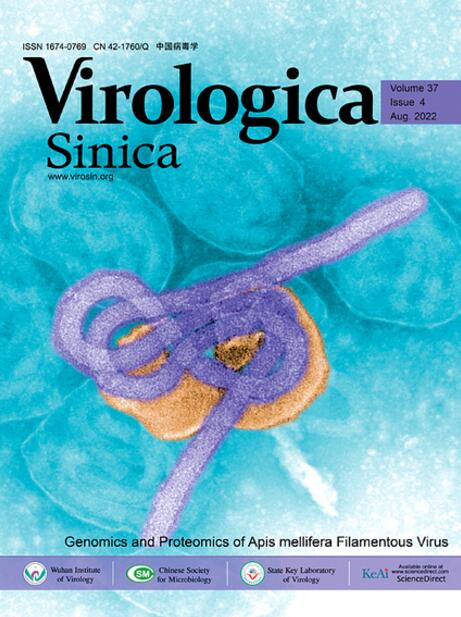The slow progression of Japanese encephalitis in aged mice is likely associated to B cell recruitment in the brain
IF 4
3区 医学
Q1 Medicine
引用次数: 0
Abstract
The Japanese encephalitis virus (JEV) causes Japanese encephalitis (JE), a severe disease that primarily affects children and induces significant central nervous system complications. With the widespread adoption of vaccination in children, the incidence among older individuals has increased substantially. Despite this epidemiological shift, research on JEV infection in the elderly remains limited. We established JEV infection models using both aged and young mice to explore age-related differences in pathology and underlying mechanisms. Brain tissue samples were analyzed for pathological changes and viral tropism in major cell types. To further characterize immune response variations, we conducted transcriptomic sequencing on the brain tissues following JEV infection. Aged mice exhibited lower mortality, delayed disease progression, and milder brain pathology compared to young mice after JEV infection. Viral titers and infection rates of major brain cell types were similar in both groups. Transcriptomic analysis revealed diminished immune activation and weaker inflammatory responses in aged mice. Additionally, microglial activation and CD8+ T cell function were significantly reduced. Interestingly, JEV infection induced the selective recruitment of B cells in the brains of aged mice. These B cells may modulate the effects of CD8+ T cells in the disease process. Compared to young mice, aged mice showed enhanced resistance to JEV progression and reduced brain pathology. This resistance was associated with a weakened immune response in the aged brain, rather than differences in viral infection. The specific recruitment of B cells in the brains of aged mice may play a crucial role in limiting disease progression.
老年小鼠乙型脑炎的缓慢进展可能与脑内B细胞募集有关。
日本脑炎病毒(JEV)引起日本脑炎(JE),这是一种主要影响儿童并诱发严重中枢神经系统并发症的严重疾病。随着儿童广泛接种疫苗,老年人的发病率大大增加。尽管有这种流行病学转变,但对老年人乙脑病毒感染的研究仍然有限。我们使用老年和年轻小鼠建立了乙脑感染模型,以探索年龄相关的病理差异和潜在机制。分析脑组织样本的病理变化和主要细胞类型的病毒趋向性。为了进一步表征免疫反应的变化,我们对乙脑病毒感染后的脑组织进行了转录组测序。与年轻小鼠相比,老年小鼠在感染乙脑病毒后表现出较低的死亡率、延迟的疾病进展和较轻的脑病理。两组主要脑细胞类型的病毒滴度和感染率相似。转录组学分析显示,老年小鼠免疫激活减弱,炎症反应减弱。此外,小胶质细胞活化和CD8+ T细胞功能显著降低。有趣的是,乙脑病毒感染诱导了老年小鼠大脑中B细胞的选择性募集。这些B细胞可能调节CD8+ T细胞在疾病过程中的作用。与年轻小鼠相比,老年小鼠对乙脑病毒进展的抵抗力增强,脑部病理减少。这种抵抗力与衰老大脑的免疫反应减弱有关,而与病毒感染的差异无关。老年小鼠大脑中B细胞的特异性募集可能在限制疾病进展中起关键作用。
本文章由计算机程序翻译,如有差异,请以英文原文为准。
求助全文
约1分钟内获得全文
求助全文
来源期刊

Virologica Sinica
Biochemistry, Genetics and Molecular Biology-Molecular Medicine
CiteScore
7.70
自引率
1.80%
发文量
3149
期刊介绍:
Virologica Sinica is an international journal which aims at presenting the cutting-edge research on viruses all over the world. The journal publishes peer-reviewed original research articles, reviews, and letters to the editor, to encompass the latest developments in all branches of virology, including research on animal, plant and microbe viruses. The journal welcomes articles on virus discovery and characterization, viral epidemiology, viral pathogenesis, virus-host interaction, vaccine development, antiviral agents and therapies, and virus related bio-techniques. Virologica Sinica, the official journal of Chinese Society for Microbiology, will serve as a platform for the communication and exchange of academic information and ideas in an international context.
Electronic ISSN: 1995-820X; Print ISSN: 1674-0769
 求助内容:
求助内容: 应助结果提醒方式:
应助结果提醒方式:


